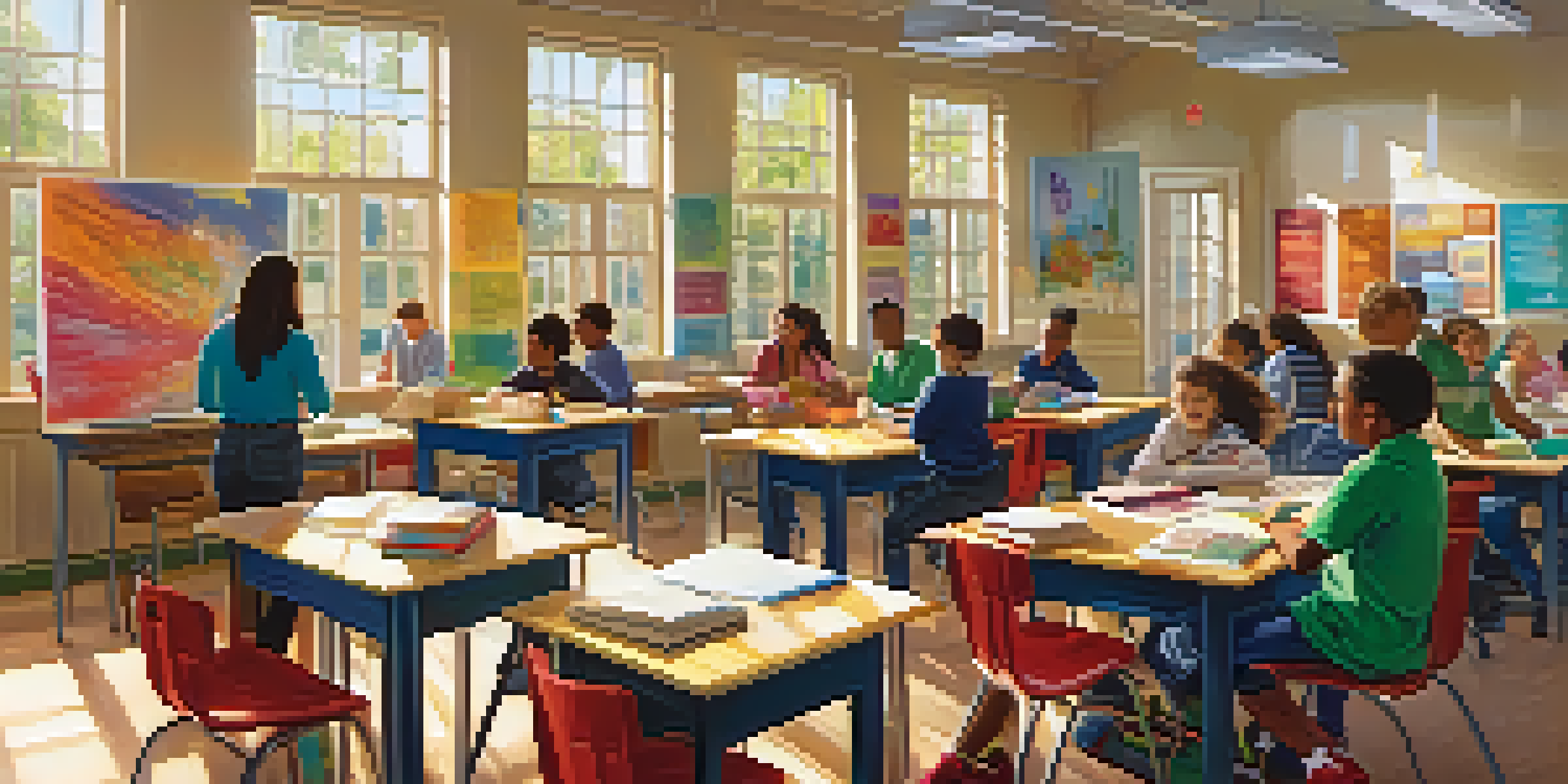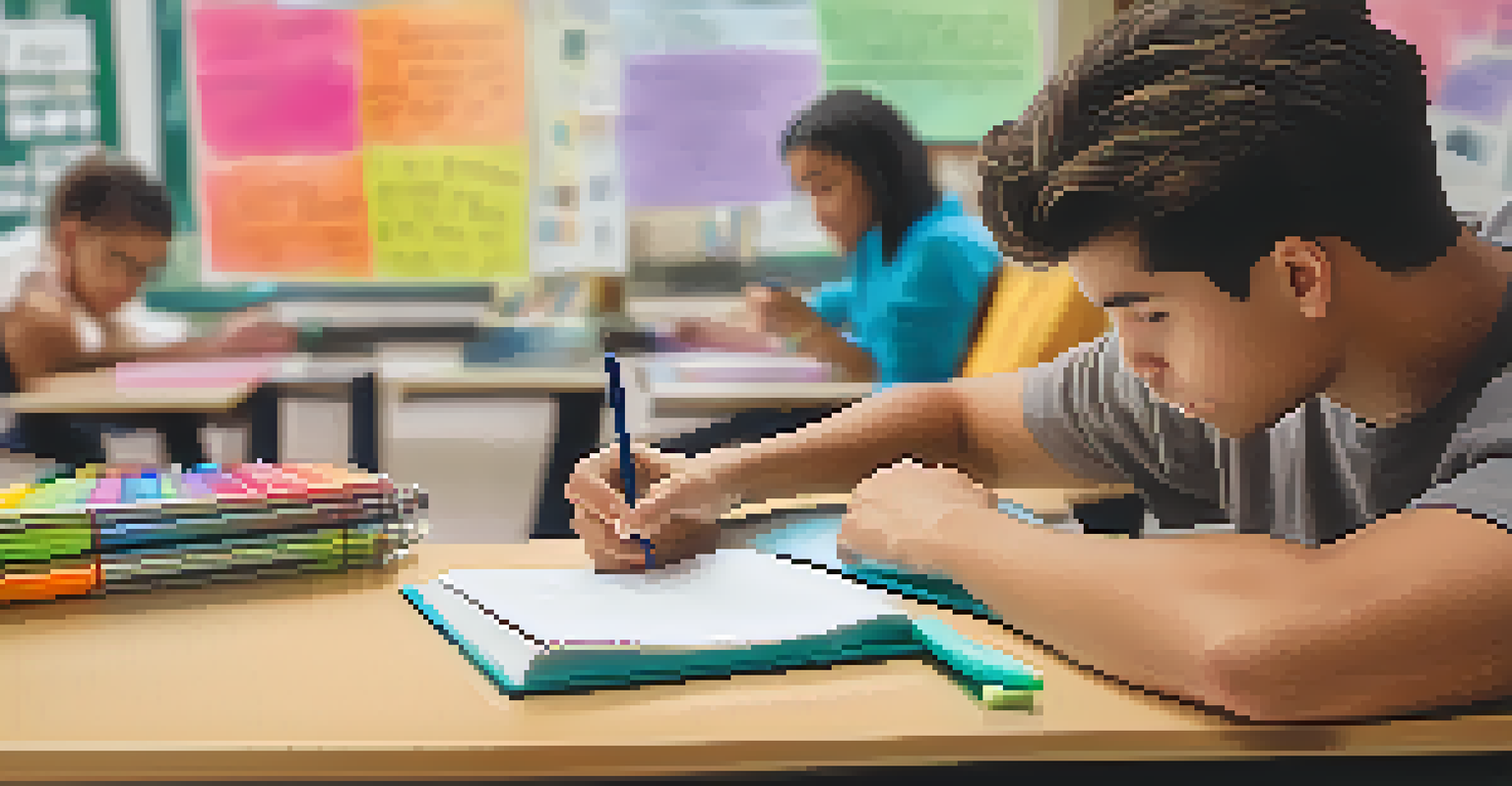Collaborative Learning Strategies for Diverse Learning Styles

Understanding Diverse Learning Styles in the Classroom
Every student brings a unique set of learning styles into the classroom, influenced by their backgrounds, interests, and cognitive preferences. For instance, some students might thrive in visual environments, while others may excel through auditory or kinesthetic experiences. Recognizing these differences is crucial for creating an inclusive learning atmosphere that caters to all. This understanding sets the stage for effective collaborative learning strategies that can accommodate every learner.
The beautiful thing about learning is that no one can take it away from you.
By fostering an awareness of various learning styles, teachers can implement tailored approaches that engage all students. For example, pairing visual learners with those who are more verbal can create a dynamic exchange of ideas, enhancing overall learning. Furthermore, this collaboration promotes empathy and respect among peers, as students learn to appreciate different perspectives and methods of understanding.
Ultimately, embracing diverse learning styles not only enriches the classroom environment but also prepares students for real-world situations where teamwork and collaboration across differences are essential. It’s about building a community that values each member's contribution, creating a more robust and supportive learning experience.
The Role of Collaborative Learning in Education
Collaborative learning is more than just group work; it’s a powerful instructional strategy that encourages interaction and shared responsibility among students. When students collaborate, they engage in deeper discussions, share diverse viewpoints, and develop critical thinking skills. For instance, working in groups on a project allows learners to pool their knowledge, resulting in a richer educational experience.

This approach not only fosters academic growth but also enhances social skills. Students learn to communicate effectively, resolve conflicts, and support each other’s learning processes. It’s like a team in sports—success relies on each member contributing their strengths towards a common goal, promoting a sense of belonging and community in the classroom.
Embrace Diverse Learning Styles
Recognizing and accommodating various learning styles fosters an inclusive classroom that enhances collaborative learning.
Incorporating collaborative learning strategies can lead to better retention of information, as students are more likely to remember concepts discussed in a dynamic group setting. This method aligns with the idea that learning is a social activity, emphasizing the importance of collaboration in achieving educational outcomes.
Creating an Inclusive Learning Environment
An inclusive learning environment is vital for effective collaborative learning. It's about ensuring that every student feels valued and has equal opportunities to contribute. This can be achieved through establishing clear norms and expectations that emphasize respect and open-mindedness. By setting a tone of inclusivity, teachers can encourage students to share their ideas without fear of judgment.
Alone we can do so little; together we can do so much.
Moreover, utilizing diverse materials and resources can cater to various learning styles. For example, incorporating multimedia elements, such as videos, podcasts, or hands-on activities, keeps students engaged and accommodates their different ways of learning. This variety fosters participation from all students, ensuring that everyone has a voice in the collaborative process.
Creating a safe and welcoming space allows students to express themselves freely, enhancing their confidence and willingness to engage with others. When students feel included, they are more likely to take on leadership roles within their groups, further enriching the collaborative learning experience.
Effective Communication Strategies for Collaboration
Communication is the backbone of successful collaborative learning. It’s essential for students to express their thoughts and ideas clearly while also being receptive to others' contributions. For instance, teaching active listening skills can dramatically improve how students interact with one another, fostering a culture of respect and understanding.
Encouraging the use of discussion protocols can also enhance communication. These structured approaches guide conversations, ensuring that everyone has the chance to speak while keeping the dialogue focused. Think of it like a game plan in sports; having a strategy helps the team stay coordinated and productive.
Enhance Communication for Success
Effective communication strategies, such as active listening and structured discussions, are essential for successful collaboration among students.
By modeling effective communication and providing students with the tools to do the same, teachers can create a collaborative atmosphere where ideas flow freely. This approach not only boosts academic performance but also builds essential life skills that students will carry beyond the classroom.
Incorporating Technology to Support Collaboration
In today's digital age, technology can significantly enhance collaborative learning experiences. Tools like Google Docs, Zoom, or collaborative platforms enable students to work together seamlessly, regardless of their physical location. For example, using shared documents allows multiple students to contribute to a project simultaneously, fostering real-time collaboration and instant feedback.
Moreover, technology can cater to different learning styles by offering various multimedia resources. Visual learners can benefit from infographics, while auditory learners might prefer podcasts or video discussions. This accessibility ensures that all students can engage meaningfully with the content and their peers.
However, it's essential to strike a balance between technology and personal interaction. While digital tools can enhance collaboration, face-to-face communication remains invaluable. Incorporating both methods allows for a comprehensive collaborative learning experience that prepares students for the future.
Assessing Collaborative Learning Outcomes
Assessing the outcomes of collaborative learning is crucial for understanding its effectiveness. Traditional assessment methods may not fully capture the nuances of group dynamics and individual contributions. Instead, using a combination of peer assessments, self-reflections, and teacher observations can provide a more holistic view of student learning.
For example, a peer assessment rubric can encourage students to reflect on their roles within the group and provide constructive feedback to one another. This not only holds students accountable but also promotes a growth mindset as they learn from each other’s insights.
Promote a Growth Mindset
Encouraging a growth mindset helps students view challenges as opportunities, enhancing resilience and collaboration in group settings.
Additionally, incorporating self-reflection exercises allows students to evaluate their collaborative experiences critically. By asking them to consider what worked well and what could be improved, educators can help students develop essential skills for future collaborative endeavors, both academically and in life.
Fostering a Growth Mindset in Collaborative Learning
A growth mindset, the belief that abilities can be developed through dedication and hard work, is fundamental to collaborative learning. Encouraging students to view challenges as opportunities for growth can transform their approach to teamwork. For instance, when faced with a difficult project, students with a growth mindset are more likely to persist and seek help from their peers.
Educators can promote this mindset by celebrating effort rather than just success. Highlighting stories of perseverance and improvement within the classroom fosters an environment where students feel safe to take risks and learn from failures. This approach not only enhances collaboration but also builds resilience.

By embedding a growth mindset into collaborative learning, teachers empower students to take ownership of their learning journeys. This empowerment fosters a sense of community, where students support one another in their development, ultimately leading to a more enriching educational experience.